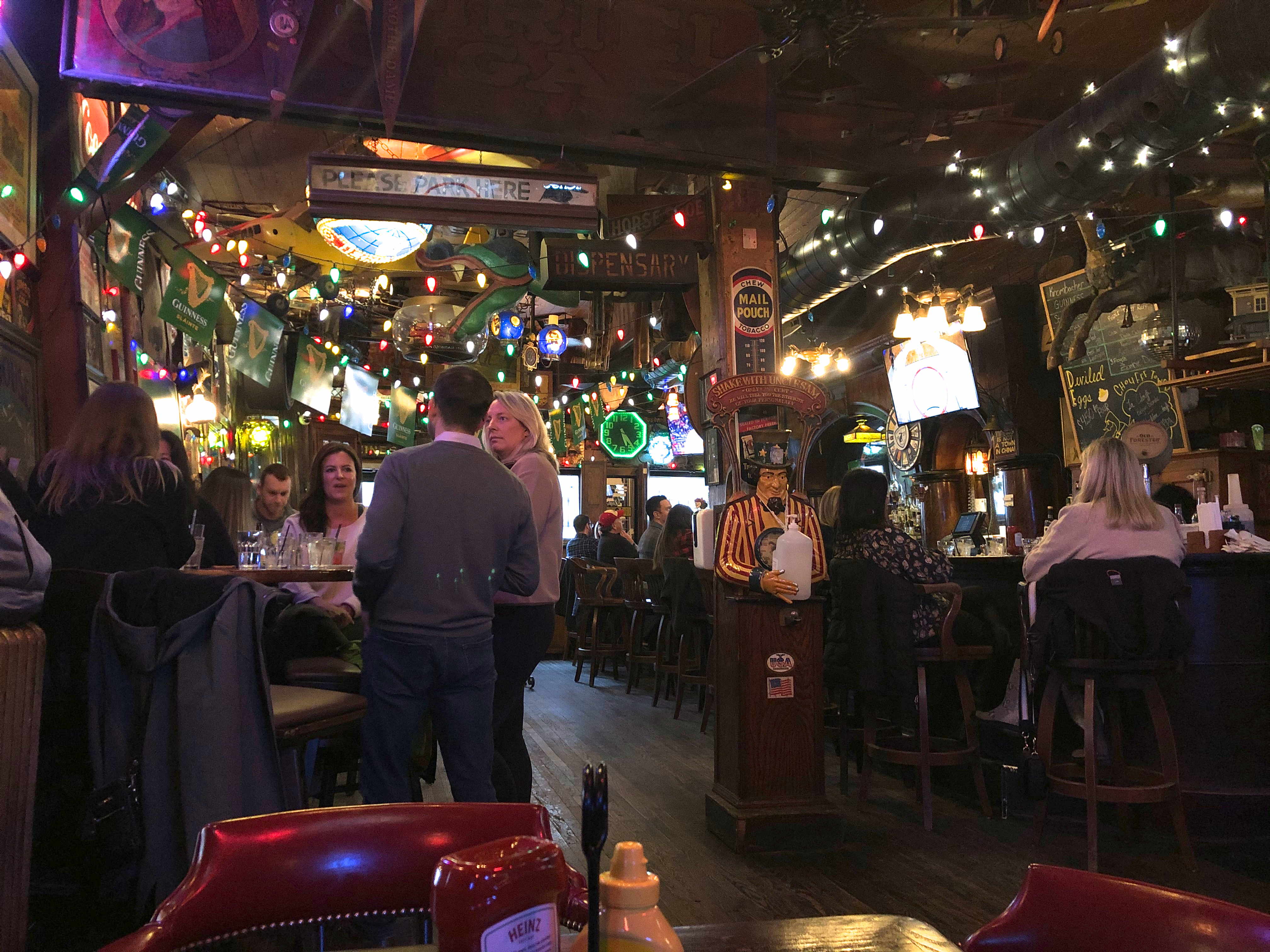
The Green Door Tavern is arguably one of the most historic buildings in Chicago. But on casual glance from the outside it looks like any number of other bars. It takes a visit and some knowledge to realize how much is really there.
The Tavern’s name comes from Prohibition-era practices. Prohibition lasted from 1920 to 1933. During that time selling or transporting alcohol was illegal. So people indulged in hidden “speakeasy” bars. If the door of a restaurant was painted green it indicated the presence of a speakeasy to in the know clients.
This property, located at 678 North Orleans Street, was developed in 1872 by James McCole. It was completed immediately following the Great Chicago Fire of 1871, and featured a two-story balloon frame wooden structure with a detached cottage in the rear. McCole rented the front of the building to Mr. Lawrence P. Elk who ran it as a grocery store with living quarters in the rear cottage.
Following the Great Fire, Chicago passed an ordinance prohibiting construction of wooden commercial buildings in the Central Business District. The Green Door building is one of the few remaining frame structures built prior to that regulation being put in place.
In 1921, a businessman named Vito Giacomo opened the restaurant on the first floor. Supposedly their speakeasy was supplied by Irish mobster Dean O’Banion.
The first thing a visitor notices is that nostalgia covers every inch of the interior. Mementos from Chicago’s past abound and many of the bar fixtures installed in the 1920’s are still in place.
The menu offers a lot of interesting options. But one burger, “The Feature,” is highlighted as a fan favorite. With pepper jack cheese, sautéed onions, house guacamole, crispy tortilla strips, and a brioche bun it does not disappoint.
As your visit continues something becomes clear: the building leans. The wall across from the first floor bar clearly slants north. The whole structure sits that way, which you can see from across the street if you take the time to look. The racking (leaning) occurred shortly after the building settled and has been that way for over one hundred years.
The most fascinating feature of the Green Door is in the basement: an original speakeasy room, now known as “the Drifter.” Upon reaching the lower level it will take a minute to figure out how to enter, because the disguised door from Prohibition times is still in place.
“The Drifter” has an atmosphere unlike any ordinary bar. The hidden entrance, lack of windows and basement location make you feel like you are back in those times when selling alcohol was an illegal, hidden activity. It is quite possible prominent gangsters were once in the room.
There is a $6 cover to enter the old speakeasy. That money, according to a waitress, goes to performers who entertain on a small stage once an hour at the top of the hour.
In a world where things change so much, it is remarkable how much the Green Door Tavern has stood the test of time. Tourists and local residents alike should put it on their to do list.
© 2022 practicalchicago.com
View more Practical Chicago photos of the Green Door Tavern by CLICKING HERE
Related Web Site:
https://www.greendoorchicago.com/
https://www.history.com/topics/roaring-twenties/prohibition
https://en.wikipedia.org/wiki/Green_Door_Tavern
https://www.bucketlistbars.com/news-articles2/106-5-oldest-bars-in-chicago
